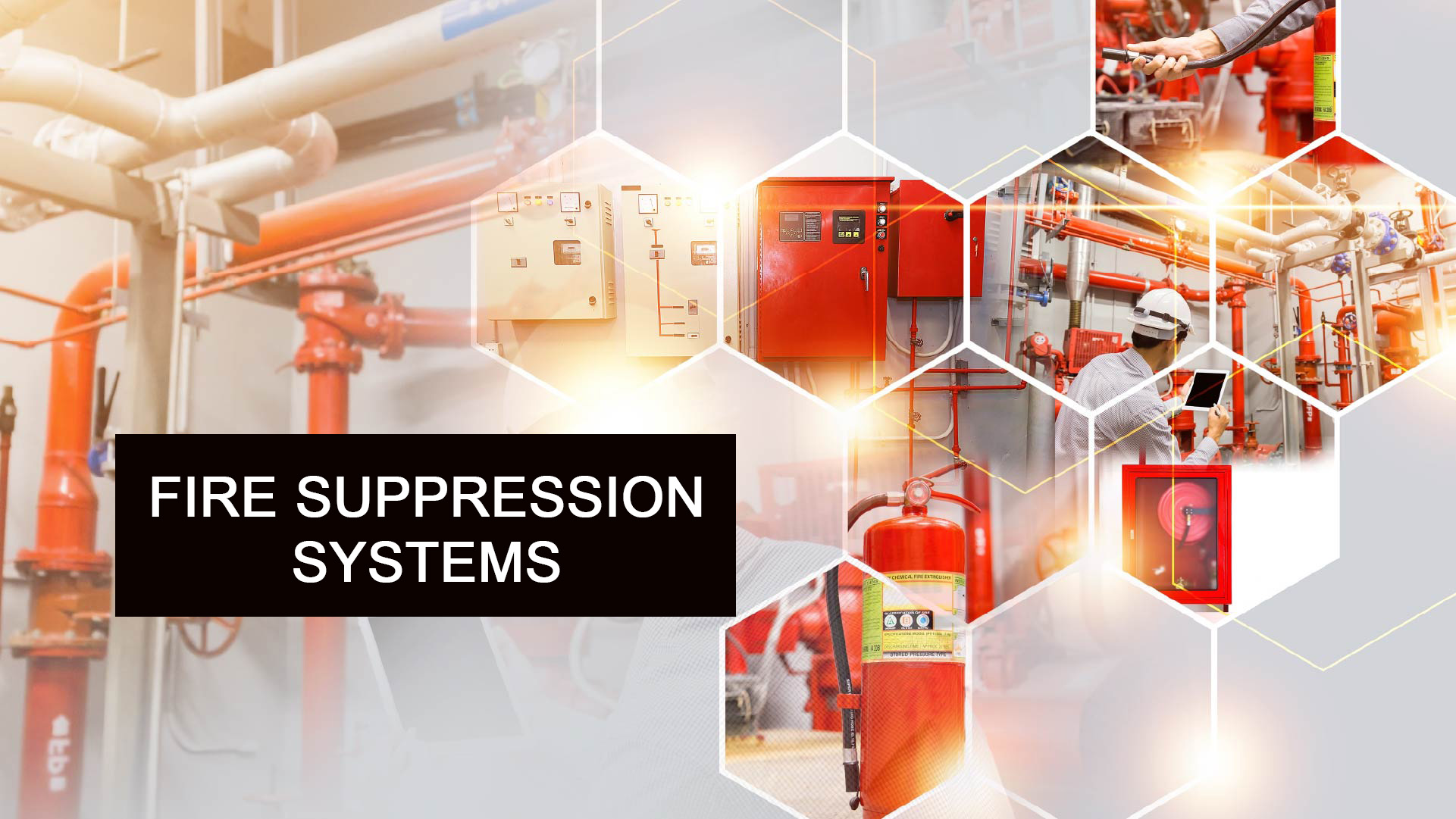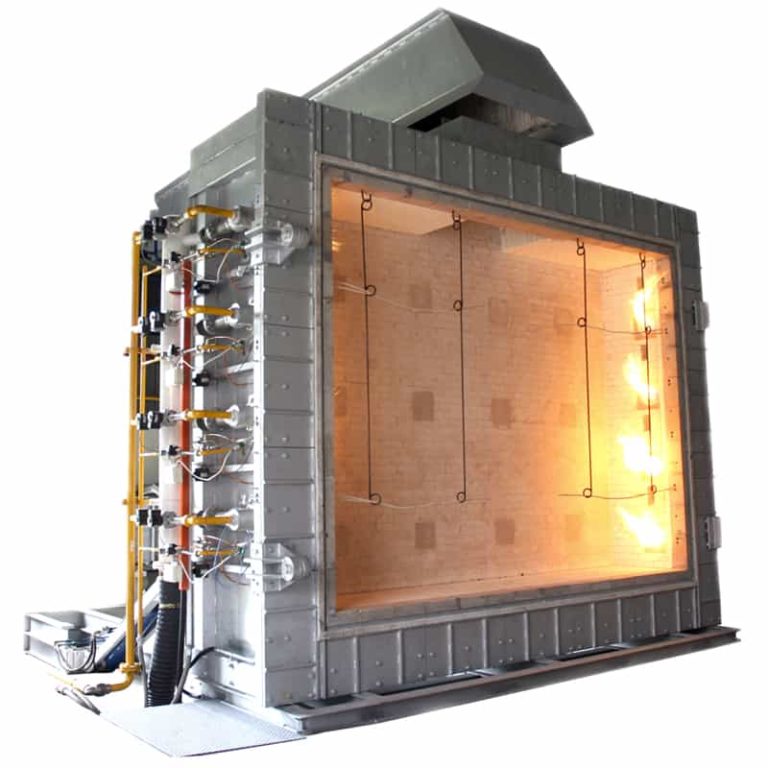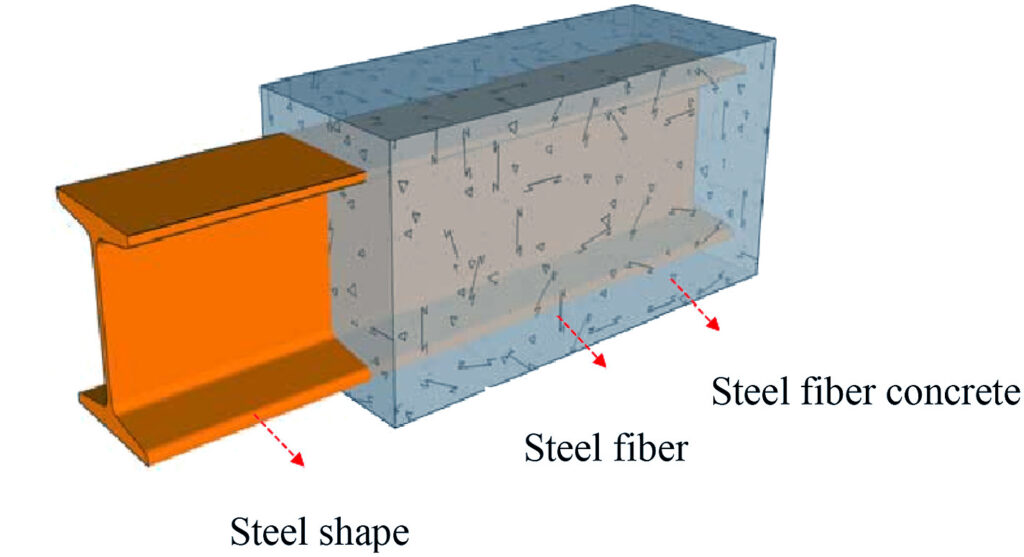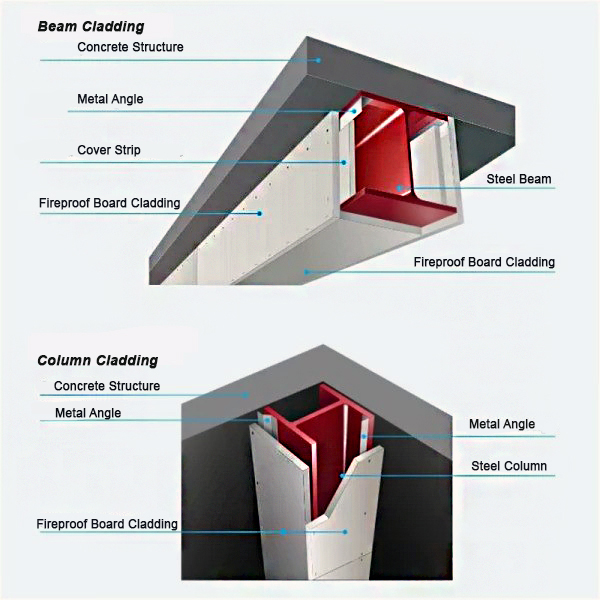




Steel fireproofing is an essential element in order to protect against the potential risk of fire. It is a method of safeguarding a building and its occupants and can be achieved in a variety of ways, such as the use of fire-resistant materials, fire-rated systems, and fire suppression systems. Fireproofing is critical for the safety of people, assets, and the environment.
The structures we occupy have seen considerable development in the last 50 years, and fire protection is a significant concern. To address this, steel has become a popular choice for construction because it is known to reduce the spread of flames. This highlights the importance of taking into account the reaction of materials when exposed to high temperatures and fire.
Despite the various improvements we have made in this area, we are still vulnerable to destructive structural fires. Even the most robust materials have their limitations. Steel fireproofing plays a vital role in ensuring that modern structures are protected and can stand for years to come.
It’s not usually the first thing to come to mind, but metals can be flammable too. We’re used to putting flames right underneath our pots and pans while cooking – yet they never ignite. We tend to associate flammability with organic materials and substances made of them. Even so, given enough heat and time, anything can combust.
Our safety can be directly impacted by the flammability of metal, which is why it is essential to address this issue. Steel buildings and structures may succumb to collapse in the event of a major fire, so in order to keep potential flames smaller and more controllable, we use both active and passive fire protection methods.
Active fire protection is a type of safety practice that is carried out to help prevent and mitigate the effects of fire. This form of protection works by identifying and addressing any potential fire hazards and by providing the necessary equipment and personnel to deal with a fire if it were to occur. By employing active fire protection, the risk of a fire breaking out can be significantly reduced.
The public is most aware of active fire protection. Sprinkler systems and easy-to-use fire extinguishers are visible, and these have been put in place to control the flames and safeguard those inside. These active methods are put in place to combat fires that have already been lit. If these active methods are not sufficient in the prevention of fire spread, passive fire protection methods are then utilized to further hinder the flames.
People tend to be less aware of passive fire protection. These materials are embedded in the structure and the façade, and help to contain fires with their fire-resistant properties. By doing so, they significantly lower the amount of damage caused by fires, providing people with more time to mitigate it.
The approach to steel fireproofing adopted by contractors is contingent on the position of the beams (interior or exterior) and the desired appearance of the completed structure. If the beams will be seen, the fireproofing method is distinct than if the beams will remain hidden. Typically, two techniques are used – reactive and non-reactive fire protection.
In their natural state, non-reactive materials offer fire protection. Common examples include sprays, encasement in concrete, boards, and blankets. These fire retardant items can be employed to insulate steel structures, encasing them in fireproof materials that remain unchanged in size or shape when exposed to heat.
When weight is not an issue, encasing columns in concrete can be a great solution. Additionally, the weight of the concrete can add strength to the structure. This method is still seen in places such as parking garages, although it is not as commonly used as it once was. Rebar may be incorporated into the concrete to provide further reinforcement.

To hide metal components from sight, fire-rated rigid boards are an excellent option. These boards are resistant to moisture and humidity, and they also provide acoustic and thermal advantages. This technique of fireproofing steel is a great choice when you intend to reduce the amount of time spent on the project.
If the steel beams are going to be concealed, a flexible blanket system is a good option. This is a non-hazardous alternative that is reliable for fireproofing steel. However, there are not many suppliers, so it may be challenging to find the right product. If the steel beams have an irregular shape, this is a great way to ensure fire protection without the need to accommodate the shape.

When exposed to high temperatures, reactive materials behave differently than non-reactive materials. This is because, upon reaching a certain temperature, they begin a chemical reaction that causes them to swell and cover the surface in a protective layer of fire-resistant material. Intumescent paint for steel is one of the most widely used reactive fire protection materials.
A fireproof coating that expands when exposed to elevated temperatures, intumescent paints can be applied using a variety of tools such as a brush, roller, or sprayer. Spraying is often the most efficient way of achieving an even coating on the surface.

Upon exposure to heat, intumescent paint increases in size dramatically, providing a safeguard from fire and wear and tear for a few hours.
The steel framework of a building can be left exposed with the use of fire-resistant paint like Contego HS . Not only does this give the structure an attractive look, it also bolsters its fire resistance. Furthermore, the paint is flexible enough that it can move with the building and not lose either its aesthetic or its fire-resistant qualities.
It’s good to know that our structures are arranged to impede or even halt the propagation of fires, yet the most ideal approach to secure your property is to forestall flames from initiating and spreading in any case. When you have a structure populated with individuals, you don’t need to challenge your defensive coatings. You can take a couple of straightforward measures to help stop fires from beginning or spreading.
An increasing number of residential homes are being constructed with steel beams these days, even though the majority of steel projects still involve bigger structures. Fire retardant products are just as important when it comes to steel structures as they are for those made from more combustible materials.
If you need more information, feel free to contact us. We’d be more than glad to assist. Investing in steel fireproofing is beneficial for both the structural soundness and safety of your neighborhood, and is the most effective way to make sure your asset is fully protected from fire.
Protected by Security by CleanTalk